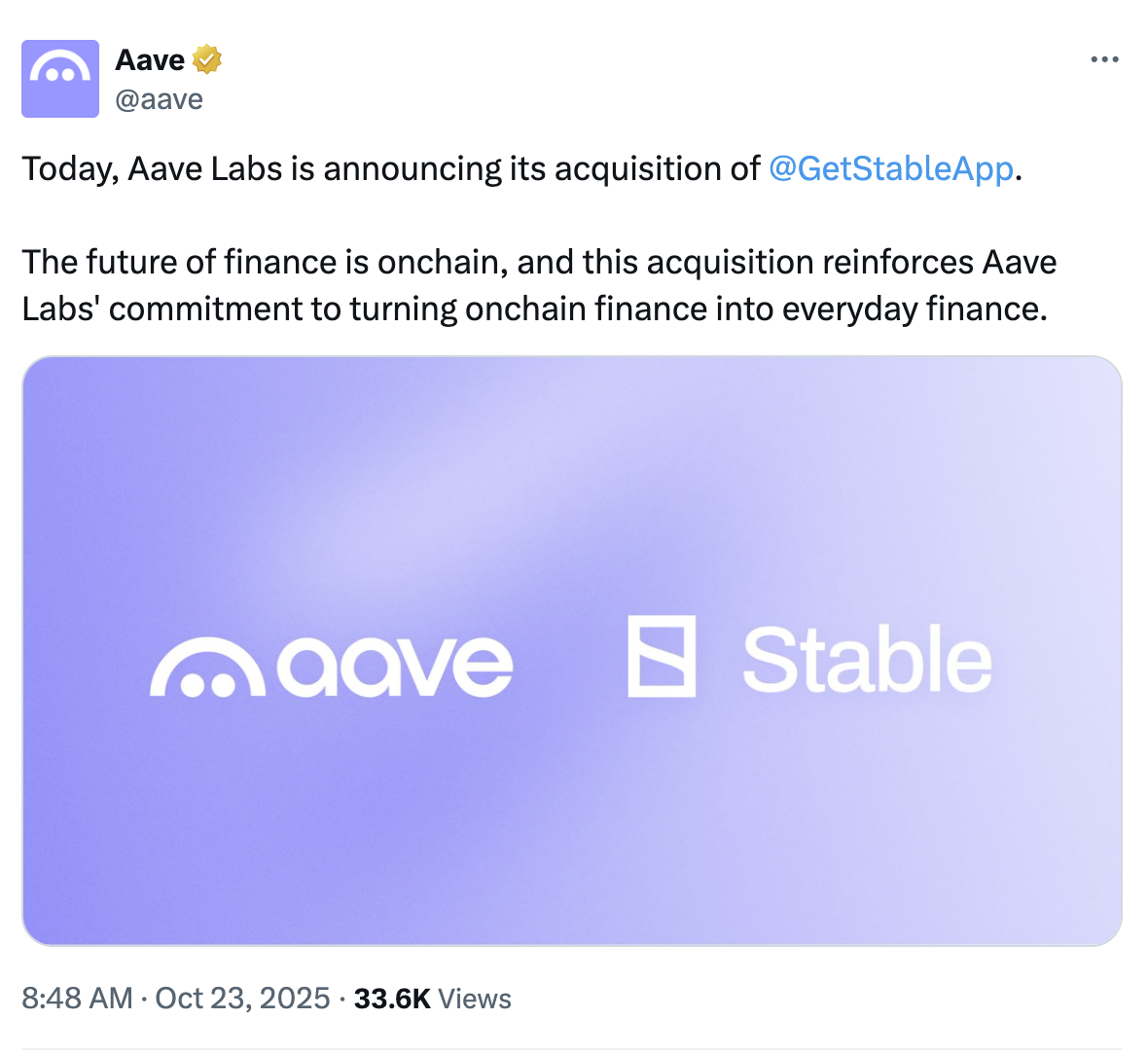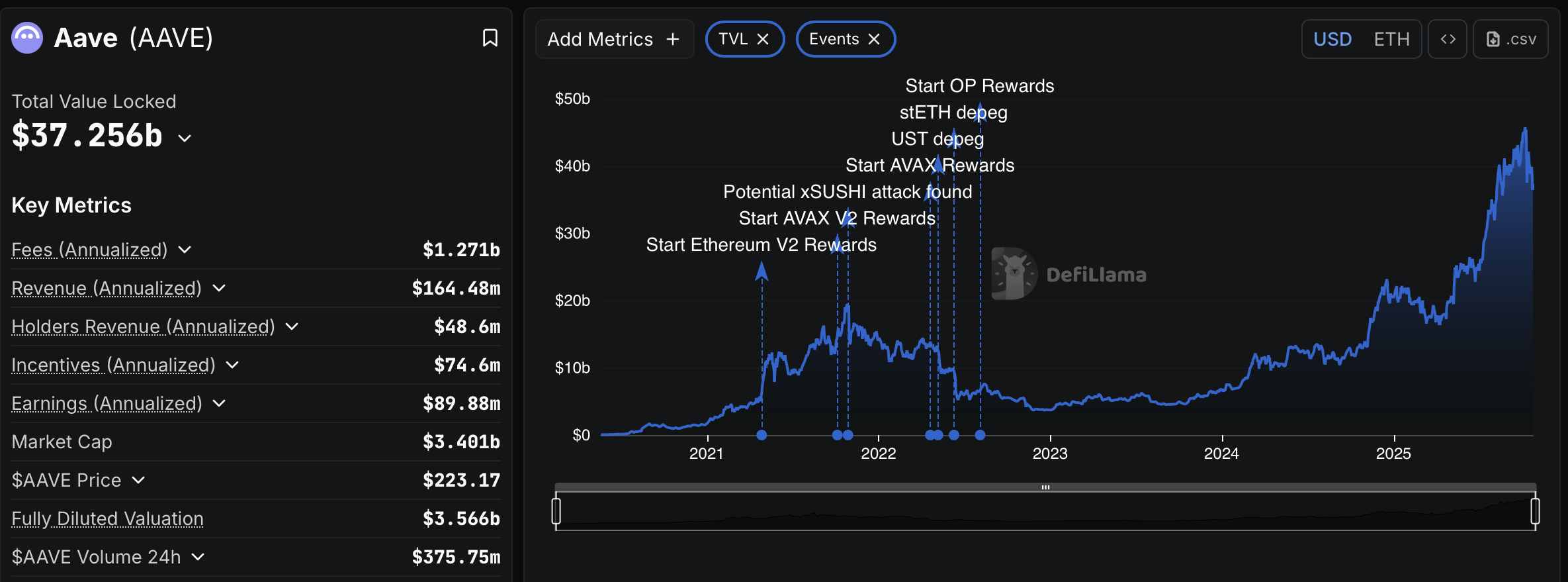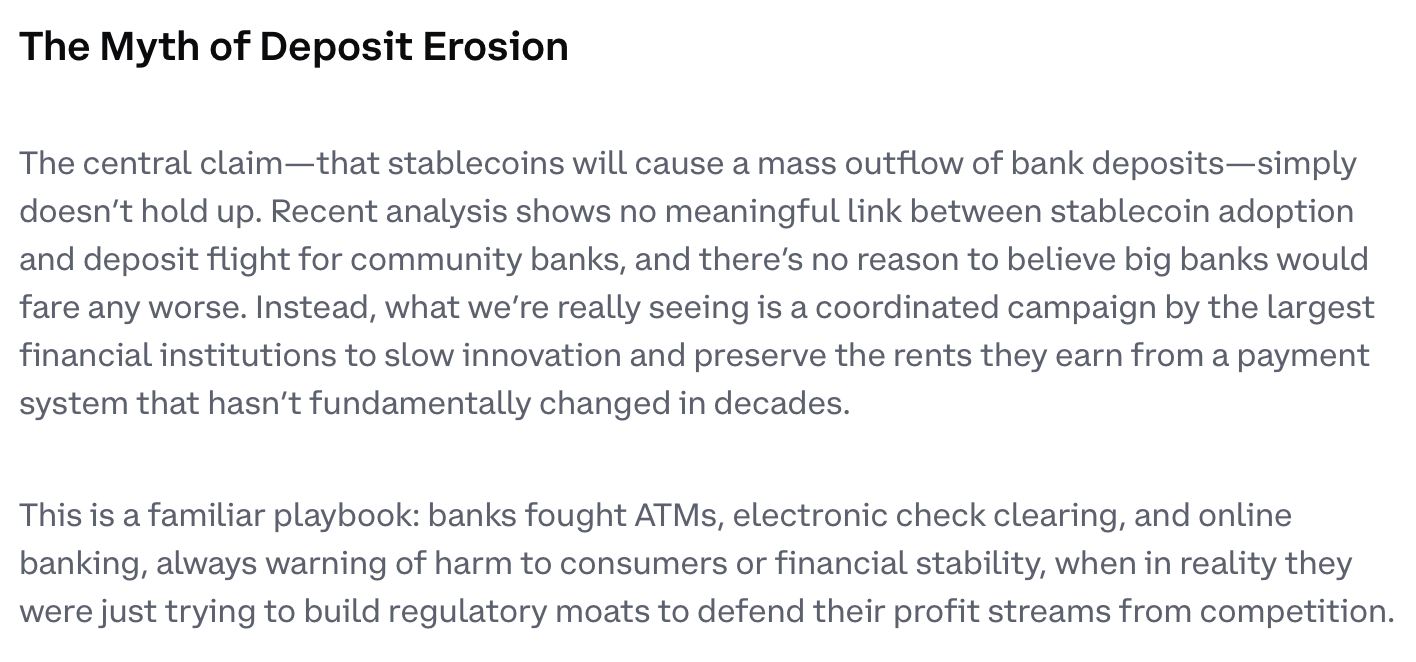Aave Labs has acquired Stable Finance, a San Francisco-based firm offering a mobile app for earning yield on stablecoins through decentralized lending. This move expands Aave’s consumer-facing services while integrating key talent to bridge traditional finance and onchain ecosystems, announced on Thursday with undisclosed financial terms.
-
Aave Labs’ acquisition of Stable Finance enhances its retail onchain offerings by incorporating a user-friendly mobile app for stablecoin yields.
-
The deal includes Stable Finance’s founder Mario Baxter Cabrera and engineering team joining Aave Labs to drive innovation in everyday finance.
-
Aave’s total value locked stands at over $37.25 billion, per DefiLlama data, underscoring its dominant position in DeFi lending.
Aave Labs acquires Stable Finance to boost consumer onchain services—discover how this deal integrates mobile yield earning and institutional tools for seamless crypto finance. Explore impacts today.
What is the Aave Labs Acquisition of Stable Finance?
Aave Labs acquisition of Stable Finance marks a strategic expansion into consumer-oriented onchain services for the leading DeFi lending protocol. Founded in 2023, Stable Finance provides a mobile application that enables users to deposit funds from bank accounts, credit cards, or cryptocurrency wallets to generate yield on stablecoins via overcollateralized decentralized markets. The acquisition, revealed on Thursday, incorporates Stable Finance’s founder Mario Baxter Cabrera and his engineering team into Aave Labs, though financial details remain undisclosed, positioning Aave to make blockchain finance more accessible to everyday users.
How Does This Acquisition Impact Aave’s Institutional and Retail Strategies?
The Aave Labs acquisition of Stable Finance complements Aave’s recent institutional advancements, such as its integration with Maple Finance for yield-bearing stablecoins and the introduction of Horizon, an institutional marketplace for tokenized real-world assets. This dual focus allows Aave to cater to both retail users seeking simple yield opportunities and large institutions requiring sophisticated tokenized asset solutions. According to DefiLlama, Aave’s protocol maintains over $37.25 billion in total value locked, reflecting robust user trust and market leadership in decentralized lending.
Stani Kulechov, founder of Aave Labs, emphasized the significance of this move, stating it “reinforces our commitment to turning onchain finance into everyday finance.” By absorbing Stable Finance’s technology, Aave can streamline user onboarding, reducing barriers like complex wallet setups for non-technical individuals. This is particularly relevant amid growing stablecoin adoption, where transactions have reached $46 trillion globally, as reported by various industry analyses.
In the broader DeFi landscape, this acquisition highlights a trend toward hybrid platforms that blend consumer ease with institutional-grade security. Stable Finance’s app, for instance, supports deposits in fiat and crypto, automatically routing funds into secure lending pools that generate yields through overcollateralized loans—typically offering returns higher than traditional savings accounts without the volatility of other cryptocurrencies.
Expert observers note that such integrations could accelerate mainstream adoption. A report from Chainalysis underscores how mobile-first DeFi tools lower entry barriers, potentially increasing user bases by 30-50% in emerging markets. However, regulatory considerations remain, especially around yield generation in stablecoins, though current frameworks like the GENIUS Act of July 2025 focus on prohibitions for yield-bearing stablecoins themselves rather than underlying DeFi protocols.
Aave’s expansion into consumer services does not dilute its institutional efforts. The Maple Finance integration enables institutions to access yield-bearing stablecoins tailored for high-volume transactions, while Horizon provides a compliant marketplace for real-world asset tokenization, such as real estate or commodities. This balanced approach positions Aave as a versatile player, capable of handling everything from retail deposits to billion-dollar institutional flows.
Furthermore, the influx of Stable Finance’s team bolsters Aave’s engineering capabilities, potentially leading to enhanced app features like real-time yield tracking and automated risk management. Users can expect improved interoperability with traditional banking, fostering a seamless transition between fiat and crypto ecosystems. Data from Dune Analytics shows that protocols with mobile integrations see 25% higher retention rates, a metric Aave is likely targeting post-acquisition.
Overall, this deal exemplifies how DeFi leaders are evolving to meet diverse user needs, ensuring scalability and compliance in an increasingly regulated environment.

Source: Aave
The acquisition follows a series of institutional initiatives by Aave, demonstrating a comprehensive strategy to dominate both ends of the financial spectrum.

Aave total value locked. Source: DefiLlama
Frequently Asked Questions
What does the Aave Labs Stable Finance acquisition mean for everyday crypto users?
The acquisition brings Stable Finance’s intuitive mobile app to Aave’s ecosystem, allowing users to easily deposit fiat or crypto to earn stablecoin yields through secure DeFi lending. This simplifies access to onchain finance, offering higher returns than traditional banks without needing advanced technical knowledge, while maintaining Aave’s high security standards.
Is Aave’s push into yield-bearing stablecoins affected by recent regulations?
Aave’s strategies, including the Stable Finance integration, operate within DeFi lending protocols that generate yield via overcollateralized markets, which are not directly restricted by the GENIUS Act’s ban on yield-bearing stablecoins. This enables continued innovation in stablecoin yields while exchanges and protocols adapt to evolving rules, focusing on compliance and user protection.
The Debate Over Yield-Bearing Stablecoins
Yield-bearing stablecoins and related DeFi lending have sparked significant discussion in the crypto and traditional finance worlds. Aave’s latest moves position it at the forefront of this evolution, but it is not alone in exploring these opportunities.
In September, Coinbase incorporated the Morpho DeFi lending protocol into its mobile app, enabling customers to lend USDC and earn up to 10.8% yield—more than double the platform’s standard 4.5% USDC rewards. This integration democratizes access to high-yield onchain markets for millions of users.
Similarly, Crypto.com partnered with Morpho in early October, extending stablecoin lending to its Cronos blockchain. Users can now deposit wrapped ETH as collateral to borrow stablecoins and earn yields, enhancing liquidity options within the ecosystem.
Regulatory scrutiny intensifies around these developments. The GENIUS Act, enacted in July 2025, bans yield-bearing stablecoins to mitigate risks to financial stability, yet it leaves room for DeFi protocols and exchanges to offer yields through lending mechanisms. Traditional banks argue this creates unfair competition, potentially shifting trillions in deposits away from conventional systems, as deposits in U.S. banks have historically underpinned monetary policy.
Proponents in the crypto sector counter that such innovations promote efficiency. On September 16, Coinbase highlighted in a blog post that institutions decrying “systemic risk” from stablecoins often benefit from outdated fees, like those in card processing, which blockchain solutions could eliminate. This perspective aligns with broader reports estimating stablecoin transaction volumes at $46 trillion, establishing them as a global macroeconomic force.

Excerpt from Coinbase’s blog post. Source: Coinbase
The ongoing debate underscores the tension between innovation and regulation, with Aave’s acquisition serving as a catalyst for balanced growth.
Key Takeaways
- Aave’s Retail Expansion: The Stable Finance acquisition introduces mobile-first tools, making DeFi yields accessible to non-experts via simple deposits from banks or wallets.
- Institutional Momentum: Integrations like Maple Finance and Horizon reinforce Aave’s role in tokenized assets, supporting over $37 billion in TVL as per DefiLlama.
- Regulatory Navigation: While the GENIUS Act limits certain stablecoins, DeFi lending protocols continue to thrive, offering yields amid calls for clearer guidelines.
Conclusion
The Aave Labs acquisition of Stable Finance represents a pivotal step in merging consumer-friendly onchain services with robust institutional infrastructure, enhancing the DeFi lending landscape. By integrating mobile yield earning and tokenized asset marketplaces, Aave solidifies its position as a leader with over $37.25 billion in TVL. As stablecoin transactions surge globally, this development promises greater accessibility and efficiency—stay informed on how these innovations shape the future of finance.
